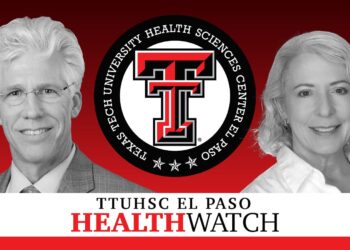At the end of 2020, Giulia Marchetti was puzzled that many of the patients hospitalized during the first wave of the COVID-19 pandemic were returning to her infectious diseases clinic at San Paolo Hospital in Milan, Italy, sicker than when they had left.

Months after catching SARS-CoV-2, some had never fully recovered, while others presented with new conditions. “Very early on, we had the feeling that we had to keep following them,” Marchetti, MD, PhD, professor of infectious diseases at the University of Milan, Milan, Italy, told Medscape Medical News.
Marchetti knew that some viruses, such as herpes and dengue, can lead to lingering symptoms after infection. Yet no one had encountered SARS-CoV-2 before to know what the post-COVID deal was about.
In 2021, the EU’s Horizon Europe work program provided more than €100 million to fund large cohort studies to determine the long-term consequences of COVID-19. The European Commission also recently announced an extra €2 million will be poured into long COVID projects. Researchers are gaining insights into the mechanisms underlying the condition, pointing to potential treatments.
The Risk for Long COVID Has Decreased

Carlo Giaquinto, MD, PhD, professor of pediatrics at the University of Padova, Italy, and president of the Penta Foundation, a nonprofit that supports research and training in pediatric infectious diseases, told Medscape Medical News that the clinical presentation of COVID-19 has drastically changed in the past 4 years. Meanwhile, immunity acquired through infection or vaccination protects the population.
Giaquinto, who also coordinates VERDI, one of the EU-funded research consortia, added that SARS-CoV-2 has evolved to become less deadly, just as expected. The risk of developing long-term consequences from COVID-19 has also decreased.
In a study recently published in the journal Viruses, Marchetti, who leads the long COVID cohort at the EU-funded EuCARE, and her colleagues showed that the Omicron variant was associated with a reduced risk of developing the condition compared with previous variants after adjusting for age, sex, comorbidities, vaccination status, and smoking. But patients who caught COVID in previous waves are still struggling with persisting symptoms years after the acute infection.
A Dysregulated Immune System
The immune system in patients with long COVID exhibits abnormalities contributing to prolonged symptoms and inflammation. Researchers have formulated different hypotheses on the possible mechanisms at play. Increased activation of the complement system and triggering of latent viruses and human endogenous retroviruses (HERVs) have been linked to these immune system anomalies.

What remains unclear is what causes what, said Branka Horvat, MD, PhD, director of the Immunobiology of Viral Infections research group at the International Center for Infectiology Research in Lyon, France, and lead of the EU-funded HERVCOV project.
One group, led by the University Hospital of Zürich and the Swiss Institute of Bioinformatics in Switzerland, found that a distinct blood protein signature, indicating increased complement activation and thromboinflammation, was associated with long COVID symptoms.
The researchers followed 39 healthy control individuals and 113 patients with COVID-19 for up to a year after initial infection. At the 6-month mark, 40 patients exhibited long COVID symptoms. A proteomic analysis of their serum showed that elevated complement activation persisted at their 6-month follow-up.
Researchers observed an imbalance in terminal complement complex formation, which led to increased tissue damage. They also observed elevated levels of thromboinflammation markers, including endothelial activation and red blood cell lysis. Platelet and antibody-mediated complement activation were also present, particularly in patients whose symptoms persisted for 12 months or more.
Patients with long COVID also showed increased antibodies against cytomegalovirus, a type of herpes virus, suggesting that long COVID symptoms may partly result from an inflammatory response triggered by the reactivation of a previous herpes virus infection. This activation may be driven by antigen-antibody complexes involving autoantibodies and antibodies against herpes viruses.
“The vast majority of people have been infected with herpetic viruses at some point in their lives,” said Horvat, who was not involved in this study. “In some stressful conditions, such as coinfection, they can be reactivated. One hypothesis is that this coinfection mechanism happens in some who develop long COVID.”
Besides explaining the heightened complement activation, these results imply that antiviral treatments targeting both herpes viruses and SARS-CoV-2 might help alleviate long COVID symptoms.
The awakening of latent herpes viruses has also been associated with the activation of HERVs. Horvat explained that scientists used to think of these viral sequences as “junk DNA” without much function. However, research has increasingly suggested that they play important roles in human physiology and pathology.
In one study by Horvat’s group, researchers found that in vitro exposure to SARS-CoV-2 triggers the expression of the HERV-W proinflammatory envelope protein (ENV) in the peripheral blood mononuclear cells in a subset of healthy patients. The researchers also looked at blood samples from 221 patients with COVID-19. HERV-W ENV was consistently detected. The team is now clustering patients with long COVID who express HERV-W to determine if this protein could serve as a biomarker to predict prognosis and guide treatment options.
Viral Persistence
Researchers have also found that persistent SARS-CoV-2 RNA in the respiratory tract, blood, and tissues is associated with anomalies in the immune system. This “RNAemia” is typically associated with viruses like HIV and herpes but is unusual for respiratory viruses, Marchetti explained.
Studies have shown that RNAemia is associated with poor outcomes in acute COVID-19, including an increased likelihood of ICU admission or death. However, whether RNAemia also increases the risk of developing long COVID is unclear. Studies have shown mixed results, partly because of small sample sizes, Marchetti said. “Some cohorts have shown an association, while others have not, and larger studies are needed to clarify this potential link.”

In the early days of the pandemic, Petter Brodin, MD, PhD, a pediatrician at Karolinska University Hospital, Stockholm, Sweden, and professor of pediatric immunology at Imperial College London, London, England, cared for children with hyperinflammation and life-threatening symptoms 1 to 2 months after COVID-19. “It was puzzling,” he said. “We were the first to suggest that the immune response is dysregulated in MIS-C (multisystem inflammatory syndrome in children) [in children with COVID-19], potentially because the virus can persist for a long period.”
In a preprint study, his group found that virus reservoirs could be behind persistent symptoms in adults too. The researchers selected 121 young women who were active and healthy before contracting COVID-19 but presented with objective measures of organ damage or dysfunction at least 3 months after a mild to moderate COVID-19 episode.
They found that people with severe long COVID had higher levels of antibodies against SARS-CoV-2, suggesting that their bodies were still reacting to the virus long after the initial infection. However, when they tested for these viral particles in the blood, they found only a few patients had detectable antigens, and there was little consistency across different testing methods. They also discovered that higher antibody levels were linked to fewer memory T cells, which might be why the virus persisted and kept triggering an immune response, Brodin explained.
The group is now running whole genome sequencing to identify genetic factors that could explain this viral persistence. Meanwhile, they are testing whether the antiviral combination, nirmatrelvir and ritonavir, can improve life quality in patients with severe long COVID in a randomized controlled trial.
While many questions remain, new clues point researchers towards potential treatments. “Long COVID is a new condition, very hard to understand fully,” said Marchetti. “But we are now entering a very different era. Now that we are out of the madness of the pandemic, we can focus on understanding what is happening in people with long COVID.”
Brodin and Horvat reported no relevant financial relationships. Marchetti reported receiving speaking honoraria from Gilead Sciences, ViiV Healthcare, MSD, and Angelini.
Manuela Callari is a freelance science journalist specializing in human and planetary health. Her words have been published in The Medical Republic, Rare Disease Advisor, The Guardian, MIT Technology Review, and others.
Source link : https://www.medscape.com/viewarticle/european-funding-takes-lead-unravelling-long-covid-2024a1000i2d?src=rss
Author :
Publish date : 2024-10-03 13:07:30
Copyright for syndicated content belongs to the linked Source.














